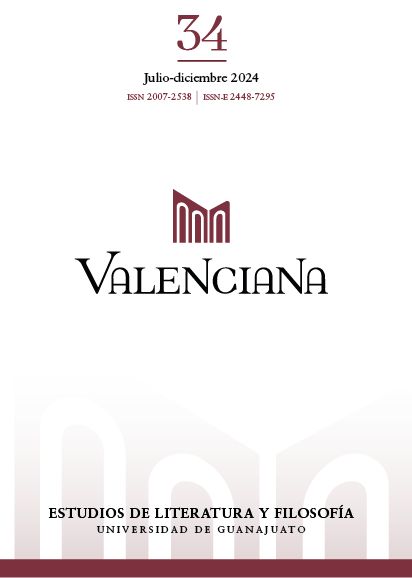Displaced Landscapes, Multiple Narratives, and Myth as Possibility.Two proposals by Naomi Rincón Gallardo
Displaced Landscapes, Multiple Narratives, and Myth as Possibility.Two proposals by Naomi Rincón Gallardo
DOI:
https://doi.org/10.15174/rv.v17i34.785Abstract
Abstract: Naomi Rincón Gallardo (North Carolina, 1979) produ-ced A Trilogy of the Caves, a cycle of music videos and performances composed of The Formaldehyde Trip (2017), Heavy Blood (2018) and Opossum Resilience (2019). Based on research carried out between Zacatecas and Oaxaca, Rincón Gallardo proposes a form of fictio-nal narration dedicated to presenting non-normative subjectivities and stories framed in socio-environmental disputes. In the context of dispossession, violence, and neo-extractivism that frame mining, this interdisciplinary artist imagines an alternative from myth and storytelling to think and write a series of counterhistories, by specu-lating on an idea of the future that has been denied. This paper con-trasts different landscape references, from Francisco Goitia’s revolu-tionary scenes to parallel aesthetics research dedicated to mining, to emphasize Rincón Gallardo’s strategies.Keywords: Landscape, Dispossession, Mining, Interdisciplinary, Vi-deo, Performance, Feminisms.
Published
How to Cite
Issue
Section
License
Copyright (c) 2024 Natalia De la Rosa

This work is licensed under a Creative Commons Attribution-NonCommercial-NoDerivatives 4.0 International License.
Author(s) who publish in this journal do accept the next conditions:
According to copyright regulations, Valenciana does recognize and respect the authors’ moral right, as well as the right of property, which will be assigned to the journal for its diffusion in open access.
Valenciana does not charge authors for the submission, editorial process or publication in the journal.
All texts published and distributed by Valenciana (without exception) are supported by the license Creative Commons Attribution-NonCommercial 4.0 International (CC BY-NC 4.0), which allows third parties to use the publication as long as they mention the author and the first publication.
Authors can make other independent and additional contractual agreements for the non-exclusive use of his article published in Valenciana (e.g. including it in an institutional repository or in printed/electronic media), as long as it is explicitly clarified that the article was published for the first time in this journal.
For these purposes, authors must sign and send the letter of submission and copyright transfer form in a PDF file to this email address: revistavalenciana@gmail.com
This journal is under a license by Creative Commons Atribución-NoComercial-SinDerivadas 4.0 Internacional (CC BY-NC-ND 4.0)).











